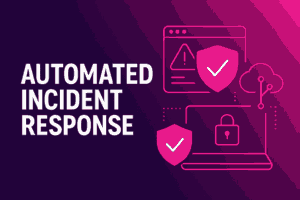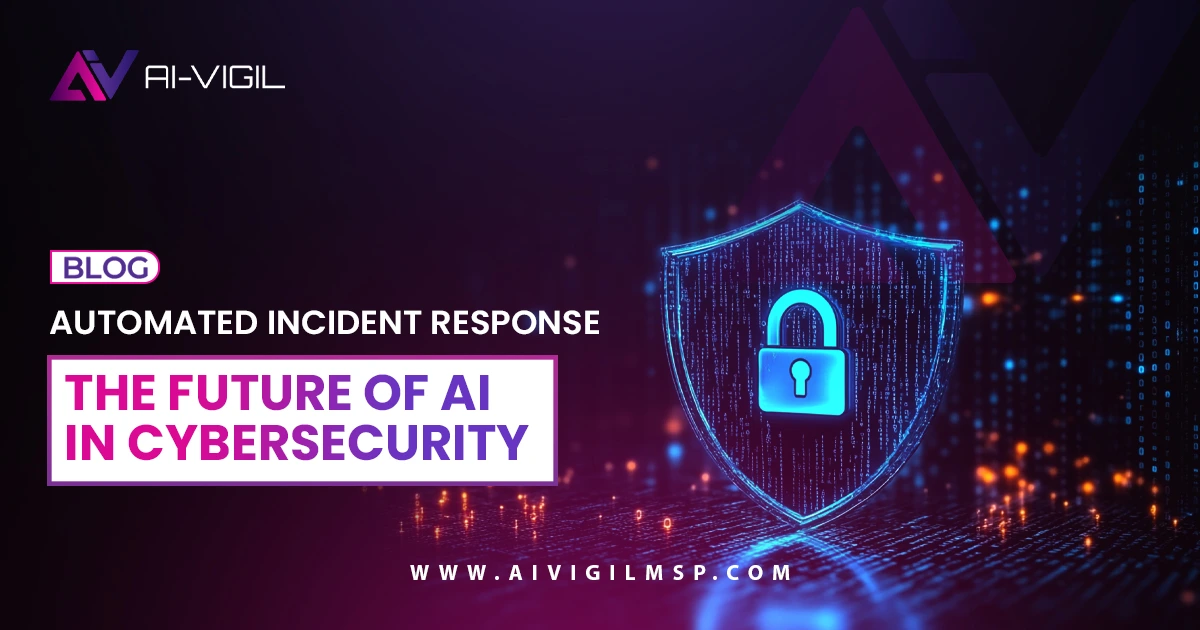Picture this: You are executing a large transaction, your salespeople are posting contracts, and your employees are handling customers data. Then, all of a sudden, it freezes in the system. A ransomware note appears on the display. Or perhaps you don’t see it, but customer information quietly stealing in the background.
To most of the small and mid-sized companies (SMBs) this is not a nightmare scenario. It’s reality. And here is the ugly reality: the old-fashioned cybersecurity where people investigate alerts many hours after an attack is not good enough anymore.
Automated Incident Response (AIR) fits into this. It is not a simple detector or alarm. It does not just sit back but takes actions against it, in real-time, and much before your IT staff team can even open their mailbox.
So why is this line of attack transforming the cybersecurity landscape of SMBs? Let’s find out.
The Problem: SMB time on Cybersecurity
Larger organizations can afford complete SOCs, around-the-clock analysts, and multi-million- dollar budgets. That is not the case with the majority of SMBs. They might have one IT manager or none at all and he/she wears several hats.
Hackers are aware of this. This is the reason why SMBs represent one of the major targets. Verizon has reported that more than 40 percent of breaches are now affecting small businesses rather than only the enterprise, in its 2024 Data Breach Investigations Report.
The difficulty is tempo. An email attack that makes it through at 9:00 AM can be running ransomware at 9:03 AM. By the time this is detected with your IT provider it is too late.
What is Different about Automated Incident Response

Conceive of AIR as first responder within your network. Rather than humans having to see an alert, it:
- Notices abnormal behavior as soon as it occurs.
- It compares it with world-wide threats intelligence.
- Acts immediately and this may include quarantining a device or disabling a suspicious log in, etc.
It is not about substitution of people. It is also about the provision of an opportunity to respond to machines, with SMBs not having to employ a 24-hour cyber team.
Real-World Examples SMB Owners Will Recognize
-
The Ransomware “Clock”
There is a ransomware attack that takes place every 11 seconds somewhere across the globe. In the case of a 15 person business, that may translate to complete shut-down in less than an hour. Under AIR, as quickly as the ransomware activity begins such as file encryption in batches, the system punishes the infected computer before the malware infects the shared drives.
-
Training Bypass Phishing Emails
Links are clicked even by the well-trained personnel. AIR not only tells you, afterwards. When a malicious login activity after phishing mail comes automatically blocked by the system. The employee resumes his normal job and the hacker is locked out.
-
Weird Intrusion at Two A. M.
You’re asleep. Someone attempts to log in your accounting system with a different country. AIR detects the pattern, blocks the effort and reports to you in the morning. Crisis avoided.
Why This is Something SMBs Can No Longer Ignore
Lets consider the perspective of a business owner and not just IT jargon:
- Cost savings: The typical SMB breach will cost over $120,000 (IBM 2024). Subscriptions to AIR are a small part of that. Cut IT costs now
- Reputation security: There is no single lost client file that will not reduce the risk of losing trust-and contracts.
- Peace of mind compliance: regulators (HIPAA, PCI DSS, SOC 2 and others) also expect ‘reasonable’ response times to incidents.
- Constant defense in a 24/7 absence of employees
SMBs: Ways to Adopt AIR
- Get audited against your vulnerabilities
- What is the most time consuming firefighting areas? Email breaches? Malware responsiveness is slow? This is how AIR can provide best ROI.
- Select a solution which simplifies, not complicates
- Instead, look to AIR tools that integrate into current systems (Microsoft 365, Google Workspace, cloud storage) and are not trying to become another dashboard.
- Combine AIR with the human eye
- The emergency, rote responses are done by automated systems. Your IT team (internal or MSP) continues to do the strategy, training, and in-depth research.
👉 For a deeper look at automation beyond security, see AI-Vigil’s guide on predictive analytics role for SMBs. It shows how AI tools cut costs and improve security at the same time.
What AIR Can’t Do
It’s important to be real here. AIR isn’t a silver bullet. It won’t write your cybersecurity policies, train your people, or make your Wi-Fi magically faster. What it does is take the most time-critical responses off your shoulders—so that one accidental click doesn’t take down your business.
Think of it as the automatic fire sprinkler in your office. You still need fire drills and exit signs. But when sparks fly, the sprinkler buys you time.
Why the Timing Matters Now
Cybercriminals aren’t slowing down. In fact, according to CISA’s latest guidance, ransomware groups are doubling down on SMBs, because they know defenses are weaker.
Each week that you delay in modernizing your defenses increases the danger. However, this brings with it opportunity; SMBs that get AIR today will be able to reach the speeds of the attackers, but without the expense of a large IT department.
Last Word, On defense to confidence.
The future of SMB cybersecurity is not one in which more personnel are brought on to follow alerts. It is having the tools that enable your business to retaliate immediately. Automated incident response pulls that off.
Complaining about not being able to keep up isn t your style, this is how you can take control. When AIR is active, you dont smell the fires of cyberattacks, you prevent them before they burn you down.
And possibly you can operate your business with the security that you have, for the first time, real protection 24 hours a day.
FAQs
-
Why is automated Incident response superior?
It is because it has an immediate working effect. The traditional systems give alerts to the human beings who can respond after hours AIR shortens the lag to seconds.
-
Would this be too complicated to a small business?
Not a bit. AIR is developed to serve smaller teams that cannot afford the full time security.
-
Is it a substitute to question to my MSP or IT team?
No. It can automate the routine responses leaving its MSP to concentrate on greater strategy and prevention.
-
What is the price of automated incident response?
Again, this can vary depending on your set up but it is a fraction of the average breach cost of over 120K+.
-
How can I determine that I am ready to take AIR?
If you experienced phishing threats, excessive downtimes, and compliance issues–it is time. Even a free audit of your MSP can allow you to see where AIR fits.






